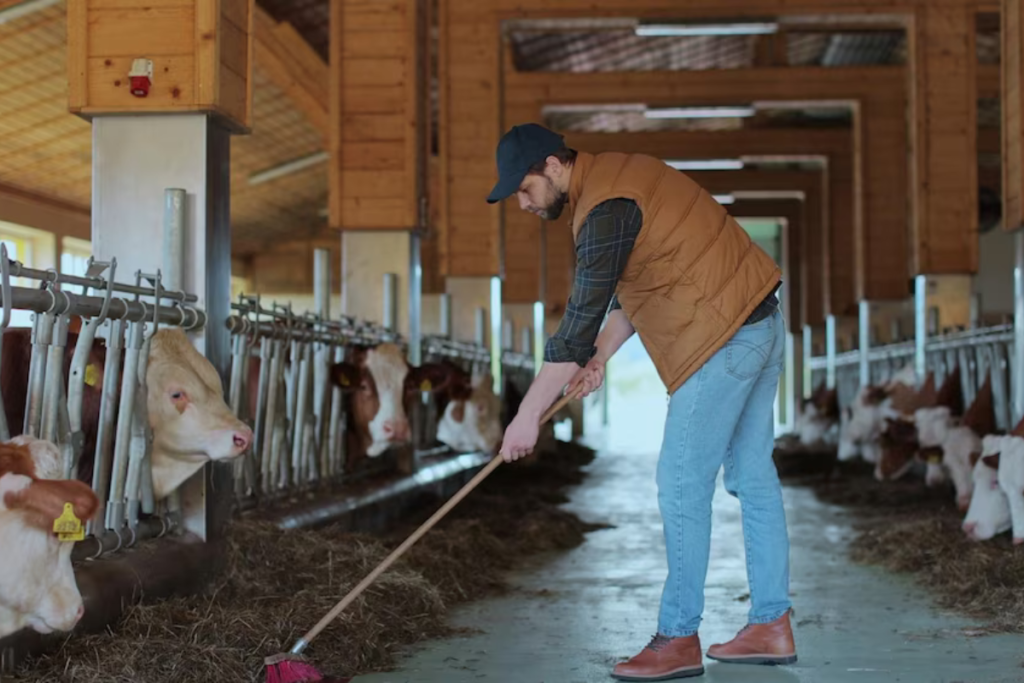How to keep your cows clean?
The objective of cleaning is not just to clean, but to feel happiness living within that environment.” as said by Marie Kondo.
It is essential for cows to live in a clean environment as prevents them from illness such as mastitis and having a healthy herd is the most effective way to produce more outcomes from it.
A sick cow has a very high cost associated with yield loss, but that’s not all. Because the disease can spread quickly within the group, it can bring you a great deal of hardship both financially and physically. We’ll explain in this article how to implement the best procedures to maintain cleanliness in the farm.
Barn Hygiene
Hygiene in the barn plays an essential role in the cleanliness of the cows. Cleaning up after a dairy farm is a difficult but necessary task that must be done on a regular basis.

Before cleaning the barn, remove all bedding and equipment. Use a broad-spectrum disinfectant with penetration enhancers for rough and porous surfaces.
You can use Scrapers Unit to make sure that the flooring and the surfaces are clean. As the scrapers unit makes sure that the barn is well-maintained as it also helps with odour and ammonia reduction.
Milking Parlour Hygiene
Cleaning should be done in the milking parlour once or twice a day, depending on how often it is used. It is important to clean the surfaces on a regular basis to stop the spread of infectionsThe maintenance of cleanliness in the milking parlour needs to be maintained in all the weather, but especially in Warmer weather conditions .

Calving & Calf Pen Hygiene
Because calves are born without an immune system, they may not survive if they are exposed to infections right away. Because of the stress of calving, cows have a weakened immune system after giving birth, which makes them more susceptible to illness.
A good start to life is provided to a newborn calf by reducing its exposure to infections! Calf scour and calf pneumonia are two early diseases that cause significant costs for the farming sector. This can be attributed to inadequate growth, reduced feed conversion rates, and the high expense and labour associated with the treatment.
Taking care of the teat:
A nursing cow is susceptible to mastitis-causing substances during three main phases of its life:
- If the teat preparation is improper during milking.
- If the cow lies down with its teat sphincters open on a dusty surface after milking.
- Several cows share the same milking machine during the dry season, which presents a risk of contamination from one cow to another or from one cow’s specific parts to another cow’s specific parts.
Also, as bacteria from the teat surface will end up in the milk, unsanitary circumstances may have an impact on milk consumers.
Apply a liquid or foam cleaning solution to the teats using a spray bottle, and then pat dry with a disposable towel or a clean, repurposed cotton towel. Many new infections could be prevented with a post-milking spray.It is also necessary to clean and sanitize the dip cups.
Conclusion
Maintaining your cows’ cleanliness is critical to their general wellbeing, comfort, and health. Your cows will stay clean and healthy if you provide them enough shelter, groom them frequently, provide clean water, a balanced diet, and employ sound management techniques. Keep in mind that a happy, productive cow keeps your farm running smoothly and benefits the animals as well.
